Abstract
1. The tremor that develops when the elbow is flexed against a spring attached at the wrist has been analysed by determining the 'power' spectrum of the demodulated surface e.m.g. recorded from two of the active muscles, biceps and brachioradialis. This was compared with the corresponding force spectrum obtained by analysis of the force developed at the fixed end of the spring (normally one of stiffness 2.8 N/mm); this force is directly proportional to the movement at the wrist. 2. When the subject was maintaining a high target force (100-160 N), with the aid of a visual display, the tremor was large with a large sharply tuned peak in the force spectrum and there was a clear peak at the same frequency in the e.m.g. spectrum. The coherence (gamma) between the force peak and the corresponding e.m.g. peak typically had a value of 0.95 or above, indicating a high degree of correlation. 3. On developing the same target force against a rigid restraint (70 N/mm) the peak in the force spectrum was absent or very much smaller and less sharply tuned. More particularly, the tremor-related peak seen in the e.m.g. spectrum under compliant conditions was no longer present under rigid conditions. 4. At low target forces (20-40 N) with compliant loading there was a small peak in the force spectrum but no peak could be detected in the e.m.g. spectrum. With increasing target force the mechanical tremor increased considerably and a peak progressively emerged from above the background level in the e.m.g. spectrum, accompanied by the development of a corresponding peak in the coherence spectrum. Thus the difference in detectability of peaks in the e.m.g. and force spectra might simply result from differences in the background 'noise' level of the two types of spectra. 5. Changing the spring stiffness in the range 0.7-12.5 N/mm altered the frequency of the mechanically recorded tremor by 1.5-2 Hz and the peak in the e.m.g. spectrum shifted in approximate correspondence. 6. The findings support the view that the tremor seen with compliant loading of the arm is due to the stretch reflex. In addition, this work should help define the conditions under which spectral analysis of the gross e.m.g. is of practical utility.
Full text
PDF

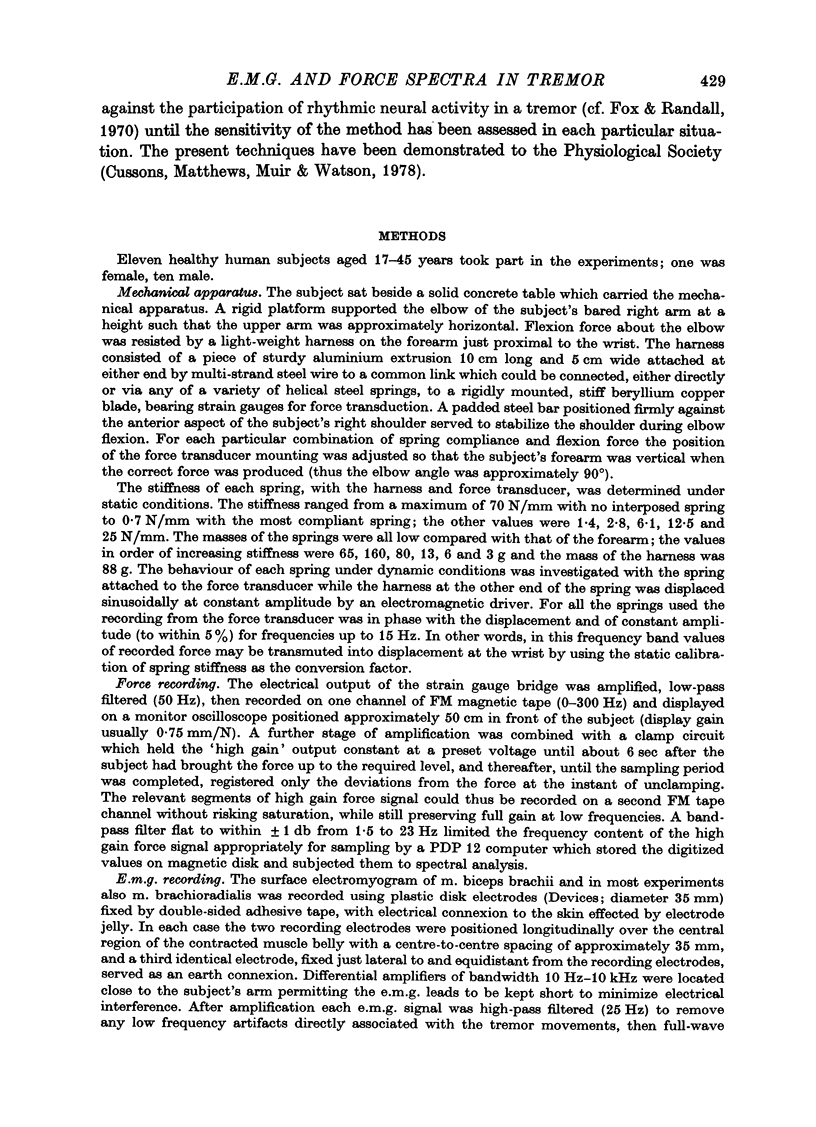
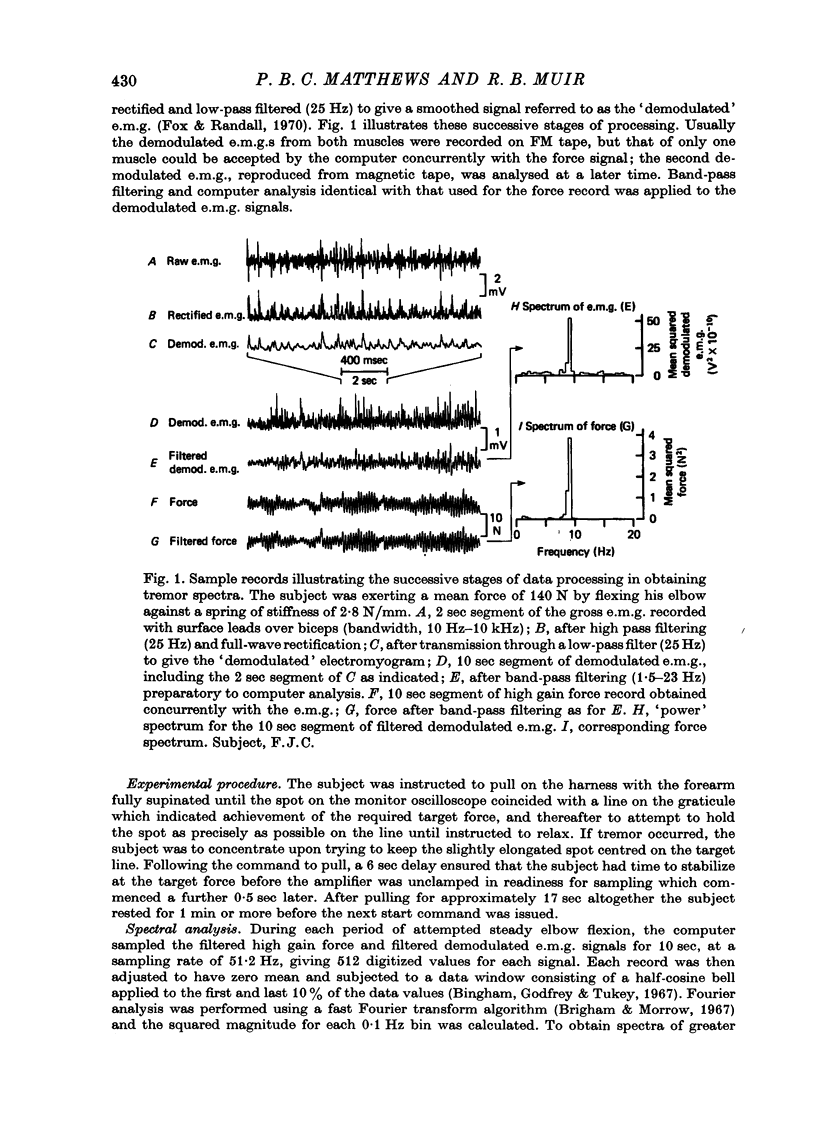
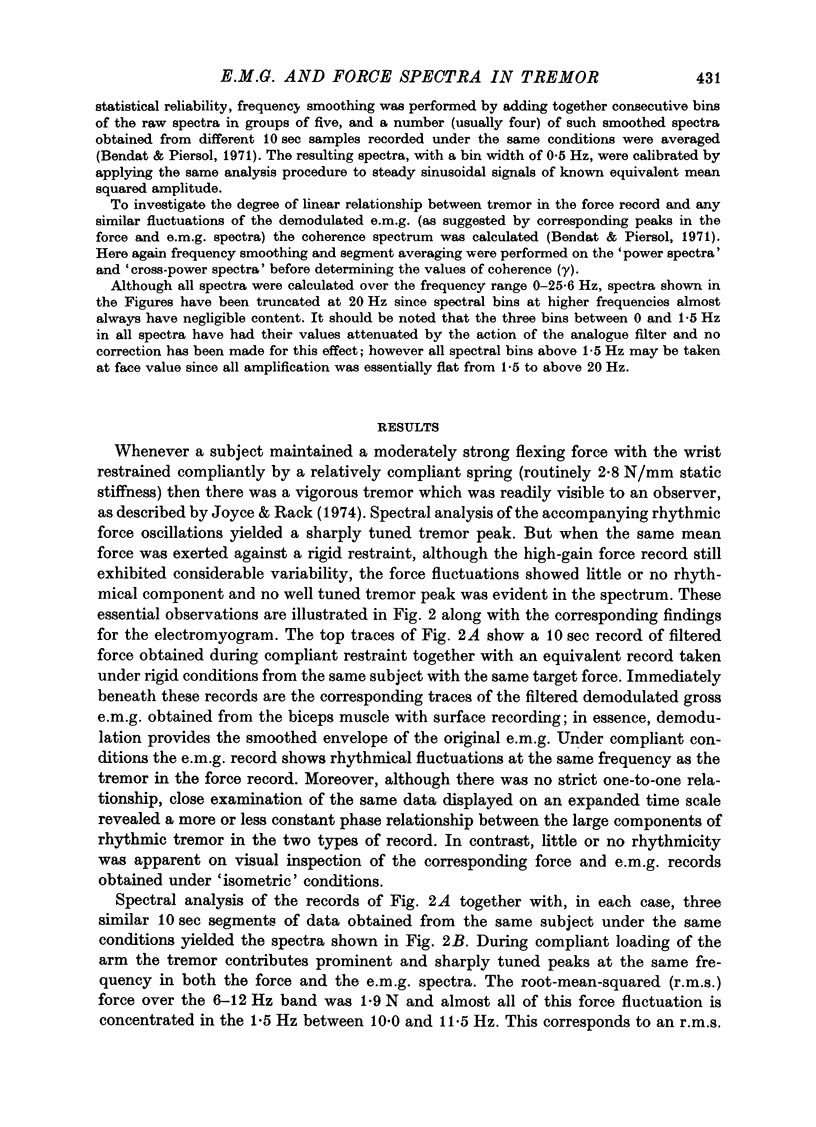
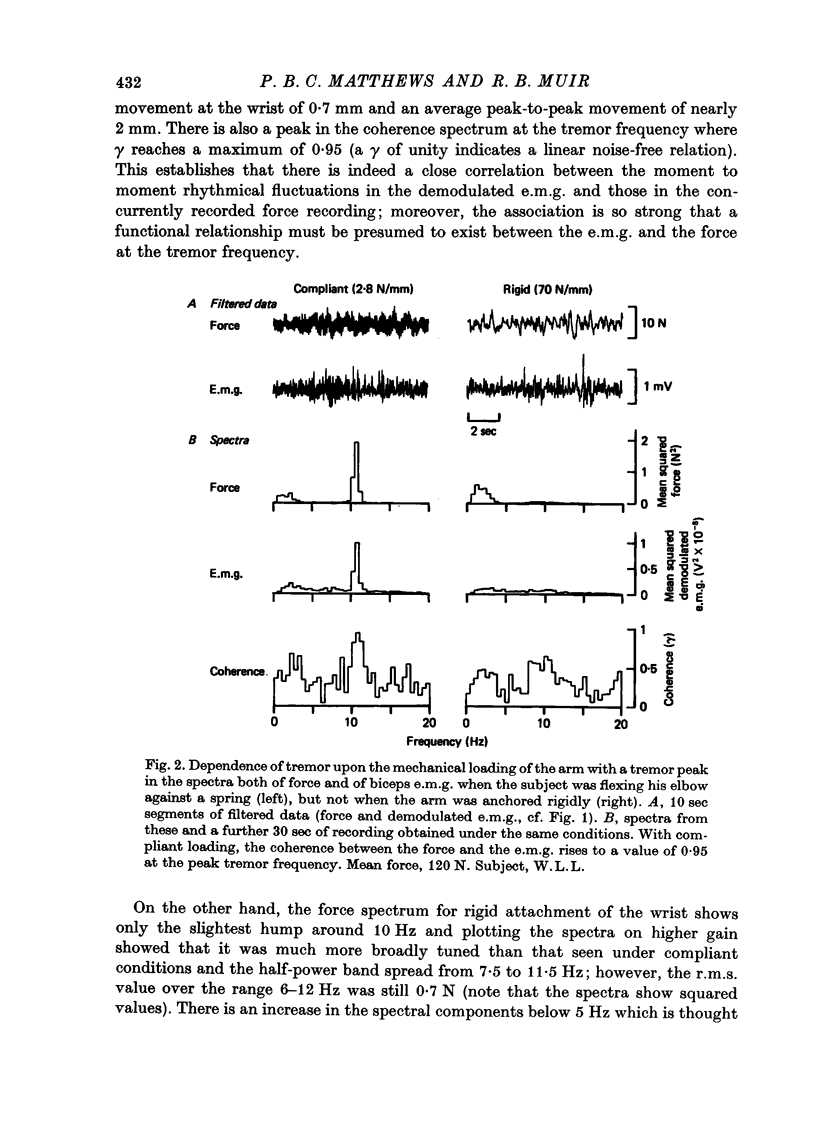
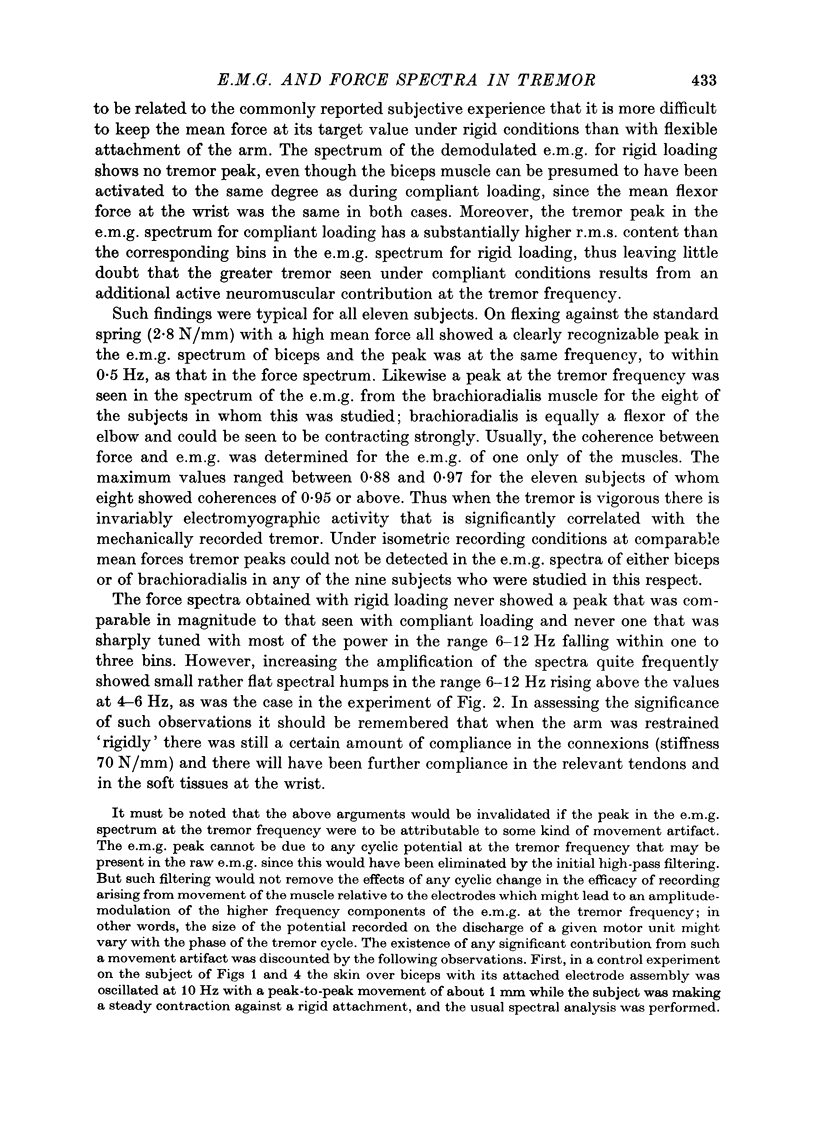

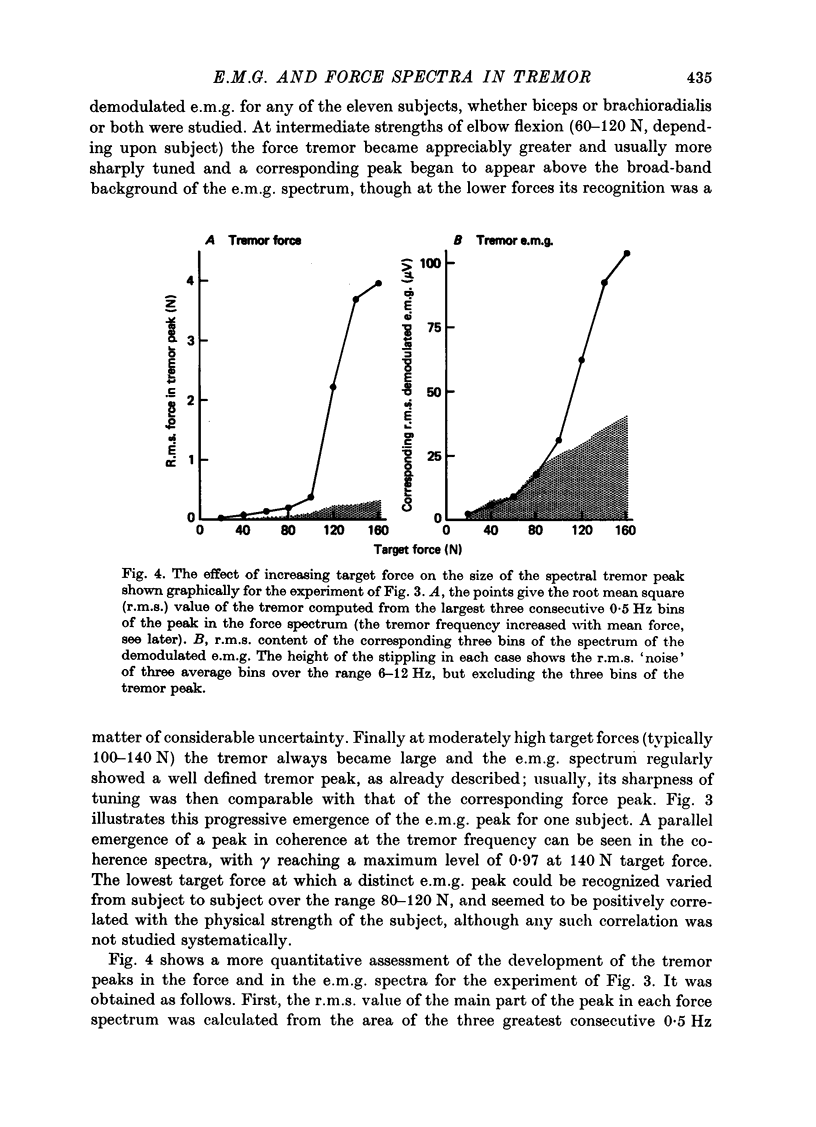
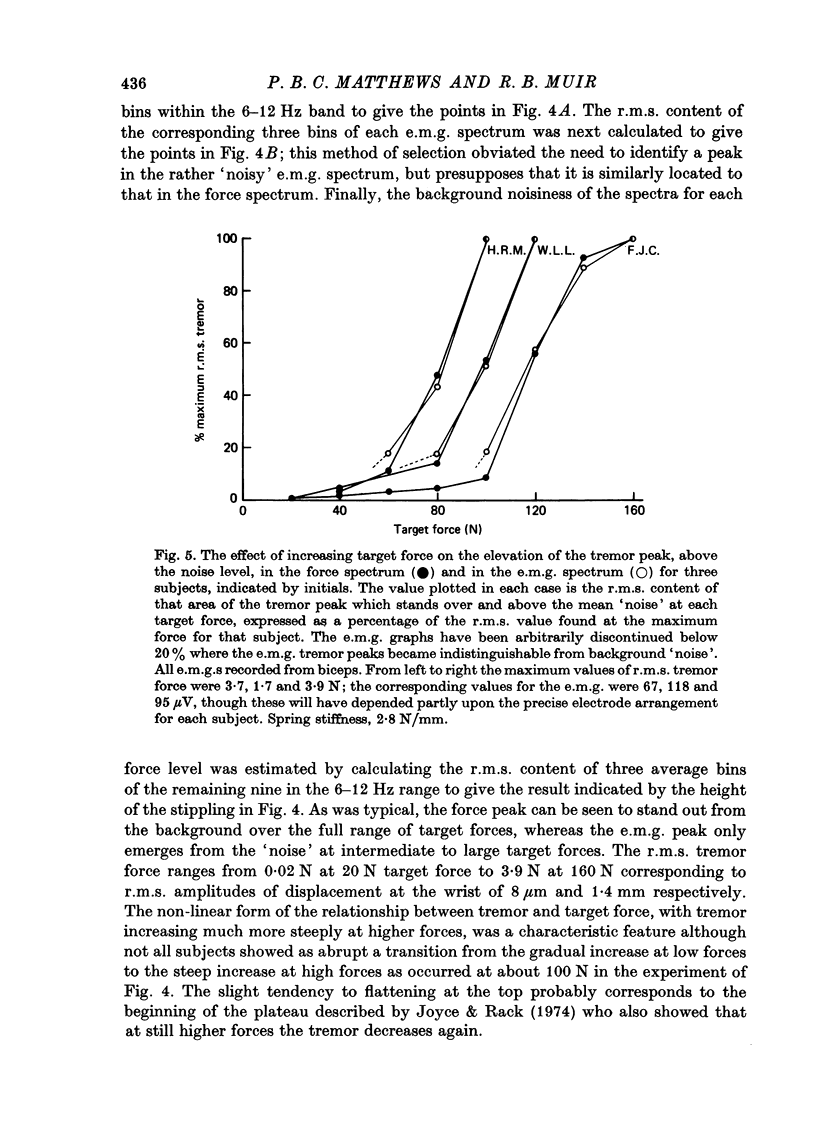
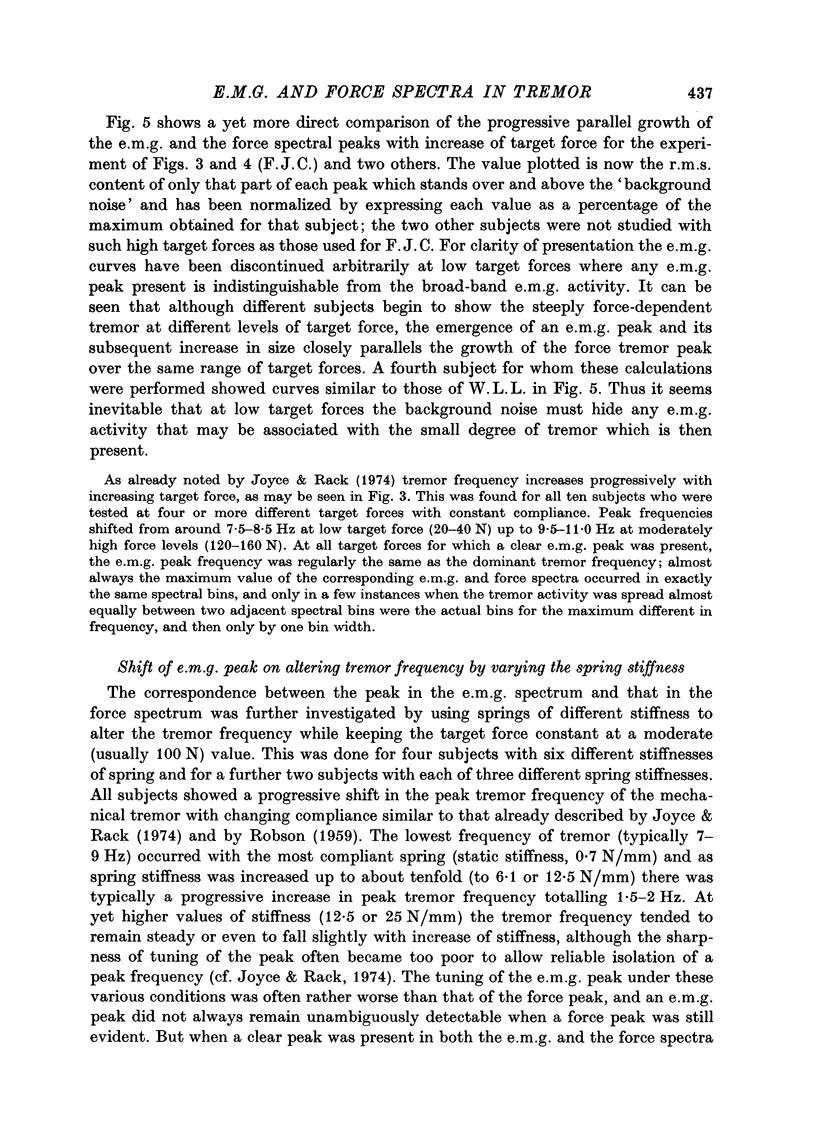
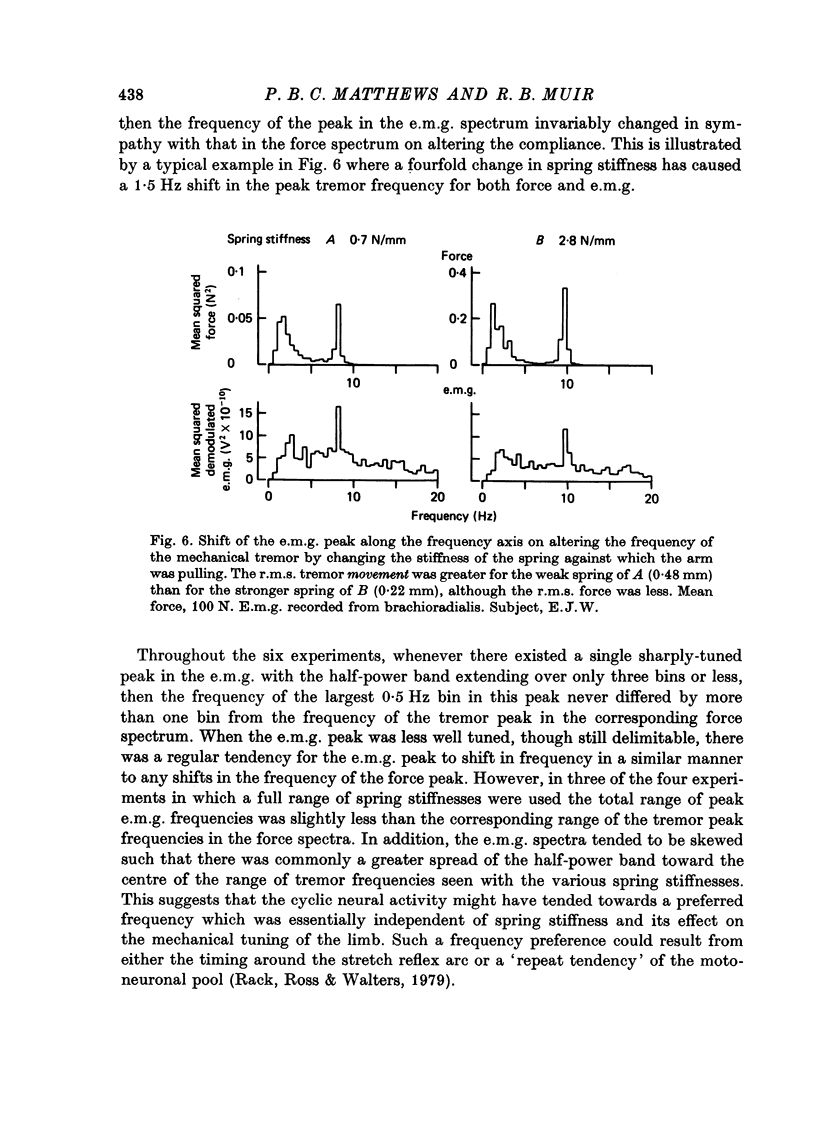


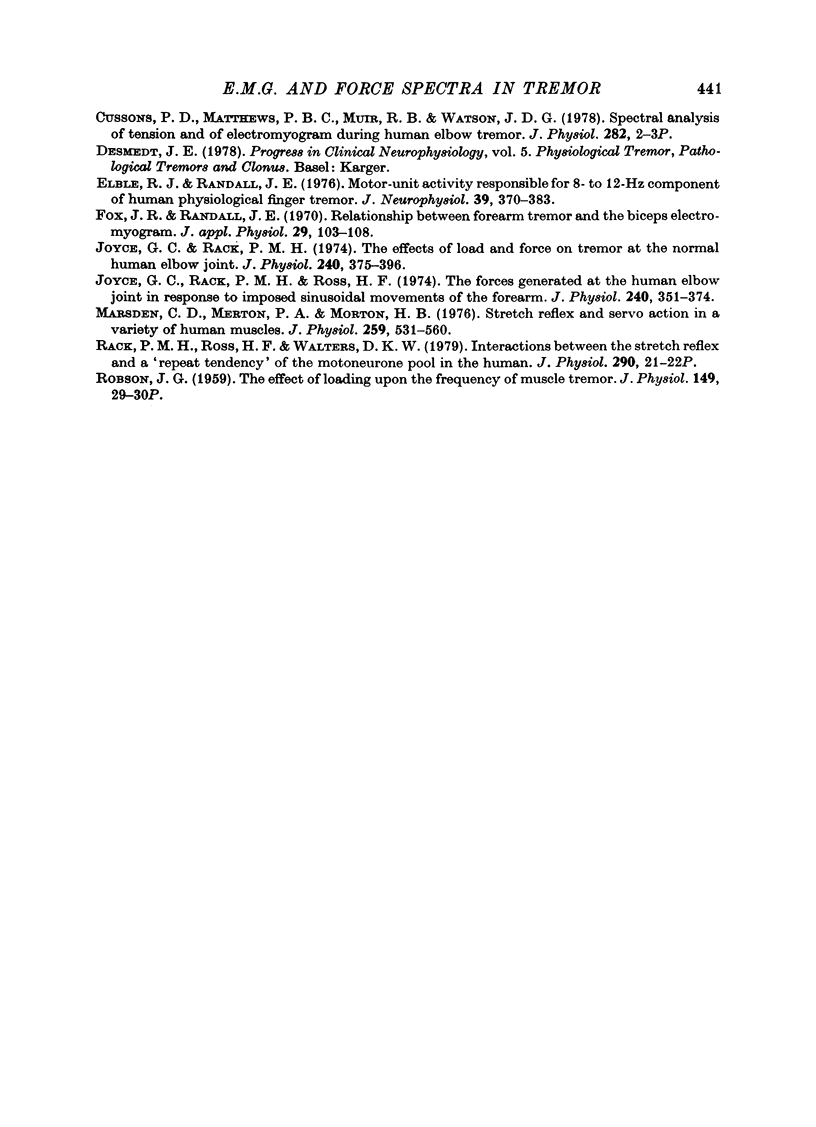
Selected References
These references are in PubMed. This may not be the complete list of references from this article.
- Allum J. H., Dietz V., Freund H. J. Neuronal mechanisms underlying physiological tremor. J Neurophysiol. 1978 May;41(3):557–571. doi: 10.1152/jn.1978.41.3.557. [DOI] [PubMed] [Google Scholar]
- Elble R. J., Randall J. E. Motor-unit activity responsible for 8- to 12-Hz component of human physiological finger tremor. J Neurophysiol. 1976 Mar;39(2):370–383. doi: 10.1152/jn.1976.39.2.370. [DOI] [PubMed] [Google Scholar]
- Fox J. R., Randall J. E. Relationship between forearm tremor and the biceps electromyogram. J Appl Physiol. 1970 Jul;29(1):103–108. doi: 10.1152/jappl.1970.29.1.103. [DOI] [PubMed] [Google Scholar]
- Joyce G. C., Rack P. M., Ross H. F. The forces generated at the human elbow joint in response to imposed sinusoidal movements of the forearm. J Physiol. 1974 Jul;240(2):351–374. doi: 10.1113/jphysiol.1974.sp010614. [DOI] [PMC free article] [PubMed] [Google Scholar]
- Joyce G. C., Rack P. M. The effects of load and force on tremor at the normal human elbow joint. J Physiol. 1974 Jul;240(2):375–396. doi: 10.1113/jphysiol.1974.sp010615. [DOI] [PMC free article] [PubMed] [Google Scholar]
- Marsden C. D., Merton P. A., Morton H. B. Stretch reflex and servo action in a variety of human muscles. J Physiol. 1976 Jul;259(2):531–560. doi: 10.1113/jphysiol.1976.sp011481. [DOI] [PMC free article] [PubMed] [Google Scholar]
- Rack P. M., Ross H. F., Walters D. K. Interactions between the stretch reflex and a 'repeat tendency' of the motoneurone pool in the human [proceedings]. J Physiol. 1979 May;290(2):21P–22P. [PubMed] [Google Scholar]


